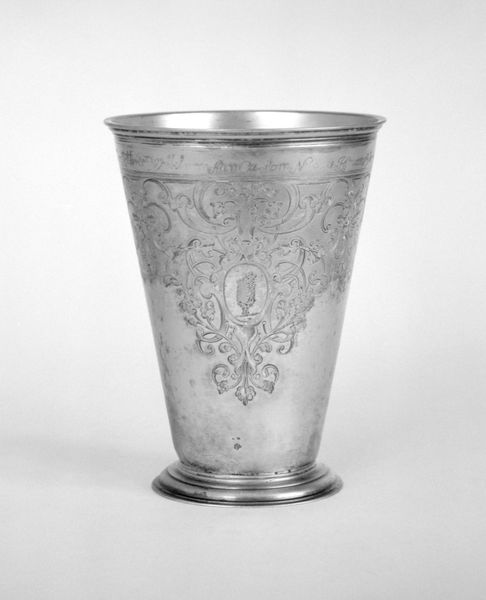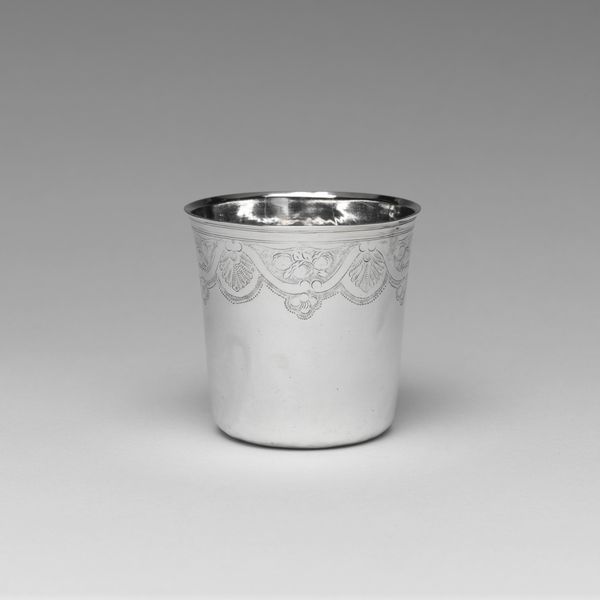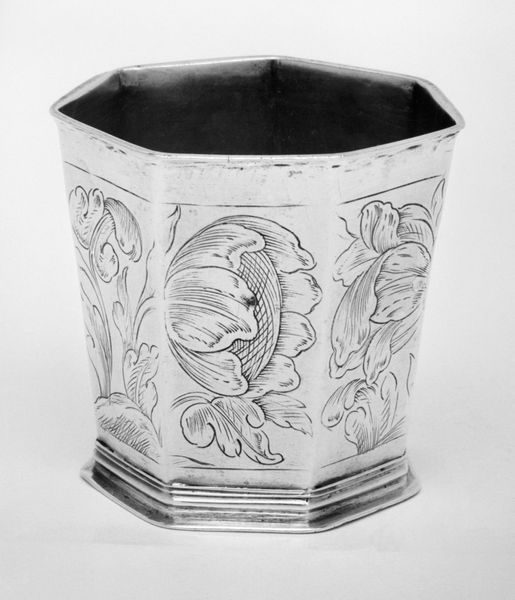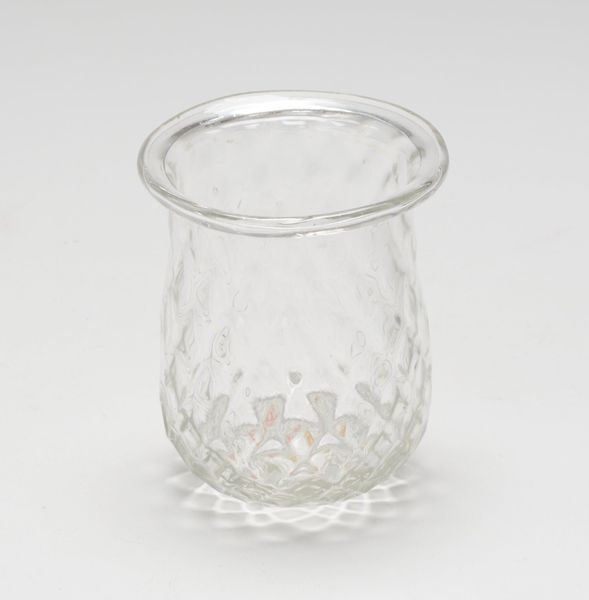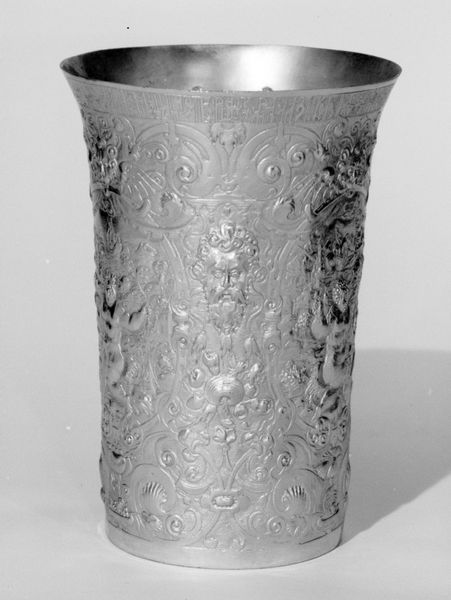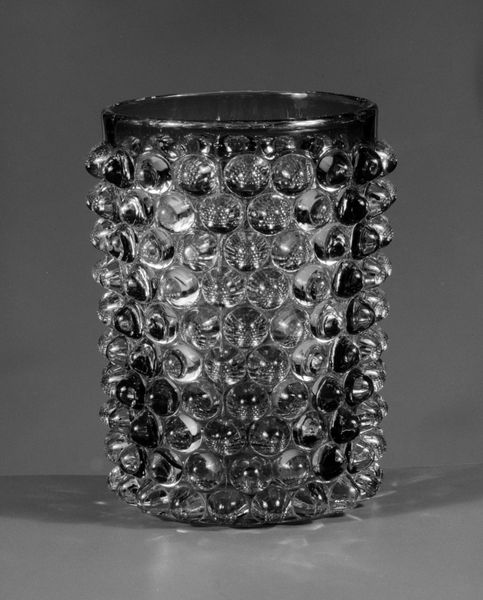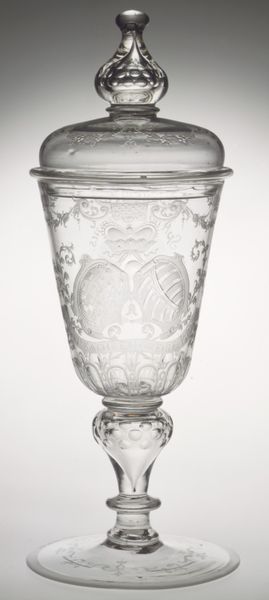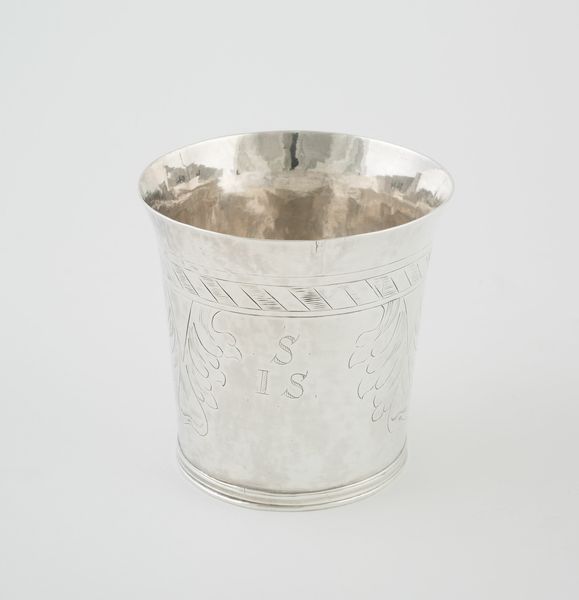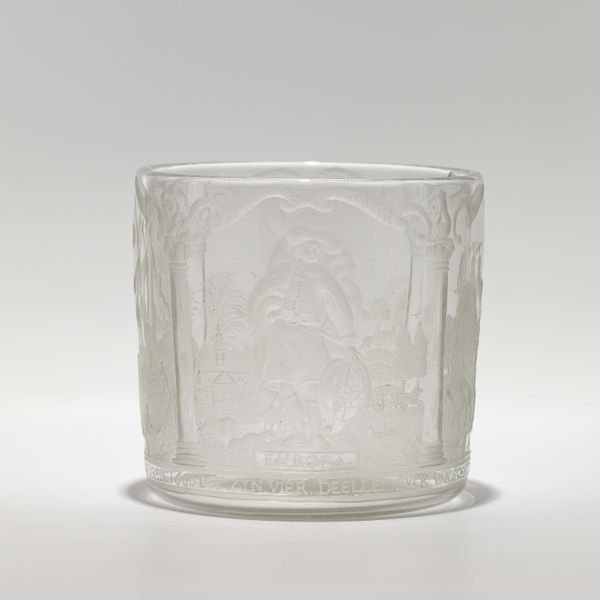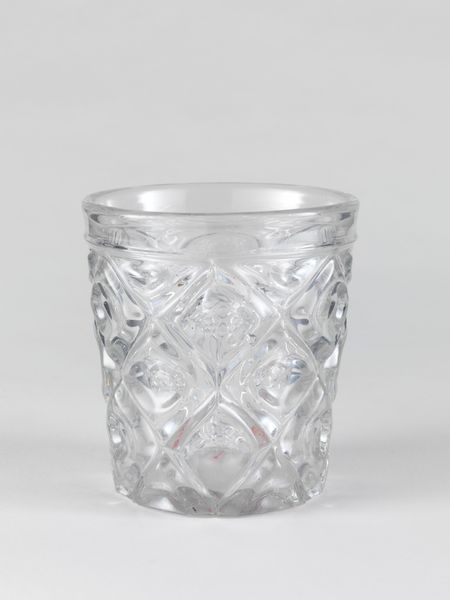
Kroes op drie bolpoten, versierd met gedreven voorstelling van drie allegorische kinderfiguren in ovale medaillons waartussen vruchtentrossen. 1675 - 1700
0:00
0:00
silver, sculpture
#
silver
#
baroque
#
sculpture
#
decorative-art
Dimensions: height 14.0 cm, diameter 10.5 cm, weight 255 gr
Copyright: Rijks Museum: Open Domain
Curator: Here we have an intriguing silver beaker, dating from around 1675 to 1700. Its Dutch name is "Kroes op drie bolpoten, versierd met gedreven voorstelling van drie allegorische kinderfiguren in ovale medaillons waartussen vruchtentrossen." It's attributed to Jacob Pfaff. Editor: Wow, that's quite a name for such a small object. My first thought is how surprisingly modern the simple shape feels, juxtaposed against the intense Baroque ornamentation. Curator: Indeed. The contrast highlights the period's approach to decorative arts. Think about the silversmith's labor: each figure and grape cluster was individually chased and repousséd. We need to appreciate the artisan's hand that gave this drinking vessel so much social value. Editor: Exactly! Who was drinking from this and on what occasions? Its size suggests a personal, almost private function, but the very elaborate decorations signal social status and perhaps even political affiliation if those allegorical figures allude to a particular patronage network. Curator: Likely so. Beakers like this were not just utilitarian; they served as display pieces, bolstering the owner's identity. Its cultural importance is intrinsically tied to socio-political influences, demonstrating artistic engagement during the time. Editor: You know, when you look at these decorative objects in a museum context, we can forget the value associated with craft practices in society. Silversmiths possessed distinct capabilities in handling materials, manipulating textures, and generating such luxurious surfaces. Curator: I agree completely. Museums elevate these pieces now but then, the value originated within a framework of artistry and consumerism. Considering their material production, such a little cup serves as a potent reminder of cultural meaning through material display. Editor: Thinking about the act of drinking, of display, it allows us to question the nature of luxury, what it signified then, and even, how those meanings persist. Curator: Absolutely, prompting us to examine not only the aesthetic experience but the power and ideologies associated with its creation and usage.
Comments
No comments
Be the first to comment and join the conversation on the ultimate creative platform.
